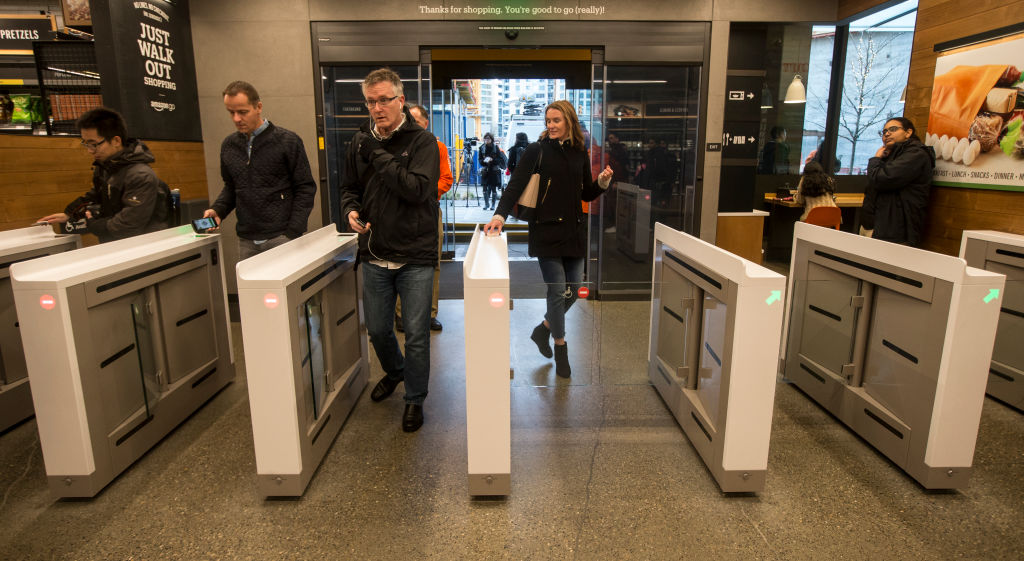The arrival and ongoing battle with Covid 19 has rapidly accelerated drastic changes in the retail sector. Experts predict this would have otherwise taken about a decade to come into effect. This paradigm shift has transformed which strategies and practices work in retail and ones that no longer do, and will continue to do so in the upcoming few years. So, what does the future of retail after Covid 19 look like? Let’s find out!
The retail landscape is seeing great transformations
With the sudden change in consumer preferences and workplace practices, most workers are working from home and are staying away from public places. They are also increasingly more conscious of their health and food behaviors.
People are preferring goods delivered to them rather than them stepping out to make the purchase.
Purchase of sports and activewear, home and comfort wear, remote working essentials has skyrocketed in the last few months. This is likely to continue as most private office spaces are looking to work remote for the next 6-12 months at the least.
The current day retailer, be it the traditional kind or the new age ecommerce kind, is learning to be speedily adaptable. Retailers are facing an unprecedented situation the likes of which the world hasn’t seen in a century.
Retailers across the globe are rethinking their existing strategies and adapting it to the future needs in the times of Covid 19.
In the next few months (possibly years), here are some of the changes the retail sector worldwide will see.
Online sales through eCommerce and mobile apps will be on-par or outdo in-store purchases
In the era of smartphone ubiquity and instant gratification, the rise of ecommerce and mobile based purchasing has been on a steady rise. Covid 19 has shifted that gear into overdrive.
Each and every retailer will need to focus on building their online sales and its associated supply chain dynamics with renewed enthusiasm. Data tracked by Retail Dive in the USA showed that retail sales saw a plunge of 18% and ecommerce sales saw a rise by 28%.
According to Deloitte’s consumer tracker, more than 40% of consumers cited safety concerns as a reason for being wary of shopping or pickups from physical retail stores.
There has been a number of cases in the past few months of retailers moving to dark fulfilment centres to transition their normal in-store purchases into online sales and curbside pickups.
Most retail segments will turn to a hybrid sales model combining traditional in-store experiences and the ease of ecommerce purchasing.
The future retailer will need to cater to buyers coming with varied expectations post Covid 19, be it in-store or online.
A smart retailer would look to consolidate their sales and inventory information into a single location, easing access and tracking. The need of the hour is a centralized and synchronized inventory management software for multi-store, multi-channel businesses that operate both online and offline.
Brands showing empathy and purpose will win trust scores
One of the biggest transformations of retail and ecommerce advertising during Covid 19 has been the transition from mass marketing messaging to more topical marketing. Branding that is intended to add an emotional touch is gaining seeing a rise in retail.
Brands that are taking note of customer sensitivities are winning huge praises, which effectively makes for increased brand visibility and trust. There are new expectations arising out of what a retailer needs to be and needs to do for consumer wellbeing. It only makes sense to build and prepare for that.
Inventory stocking and management will need to be far more balanced
Most retailers often stock their inventory well in advance and before the customer actually needs it, especially seasonal and festive goods. This is no longer viable as shopping patterns of most consumers are now geared towards immediate needs and less spending.
In this scenario, it wouldn’t make business sense to have a large amount of stock for non-essentials. The inventory needs to be balanced and more in-line with the current calendar, whatever may be the season.
The focus should be on clearing the existing backlog due to the months of lockdown and shelter in place orders.
In the near-term, many retailers are lowering prices of their items or marking existing inventory for release in the future. This means they must plan their inventories to the most optimal levels. They need to match only what the actual demand is, not forecasted sales.
Retail store design and practices will need to be completely rethought
Most retail stores are designed to make a shopper spend more time in the store to enable more purchases. This is no longer a viable strategy.
The future of retail after Covid 19 will be more about increasing purchase speeds, and less on pleasing the customers.
Here is what stores will need to do:
- Think strongly and plan efficiently to enable and enforce social distancing and sanitization norms.
- Plan for the long term, not just temporary measures.
- Groceries and other essential goods stores have made overnight changes to the existing store shopping norms – take notes and learn from their experiences.
- Showcase their personality and principles
- Craft an in-store experience that creates a safe space (both physically and mentally) for consumers.
Lifestyle trends are drastically changing and they need to be factored in
Being at home for months together, the shopping needs of almost every consumer has seen a huge change.
The usual Fall collection needs to make way for the stay-at-home collection. This applies across retail segments like apparel, technology, FMCG etc.
The categories of what shoppers generally tend to purchase is changing. These will need to be heavily factored in retail business decision making.
So will retail stores be completely defunct?
No, not really. At least not all retailers. Most retail stores have changed how they think of their operations and service. They are now more open to technology based solutions that ensure their business continuity as well as customer satisfaction.
They’ve made adjustments and brought in changes. This includes a contactless transaction experience, accepting mobile payments and digital wallets, providing curbside pickups and more.
Yes, the retail sector has been one of the worst hit areas of business due to the effects and impact of Covid 19. Changes that were seen as being years off had to be made in a matter of weeks, if not days. But this also has enabled many a retailer to adapt and overcome these logistical hurdles. They may in fact be able to better cater to their consumer than before.
The present may appear bleak, but the future of retail after Covid 19 is not. It is full of novel retail practices, growth, and the strong rise of the omnichannel retailer.
Request Demo
thank you
thank you
thank you
Request Demo
window.IS_INDIA = 0;window.USER_COUNTRY = 'China';window.USER_CITY = 'Hangzhou';window.USER_COUNTRY_ISO = 'CN';
Sharan is an avid writer with experience writing on different technologies for startups in various domains. He’s a self-professed tech nerd and start-up buff who likes keeping abreast with all the latest news in these areas.
(function(d){var s=d.createElement('script');s.type='text/javascript';s.src='https://a.omappapi.com/app/js/api.min.js';s.async=true;s.dataset.campaign='cxecxy09nlvnnyvfiqjf';s.dataset.user='22867';d.getElementsByTagName('head')[0].appendChild(s);})(document);
,



